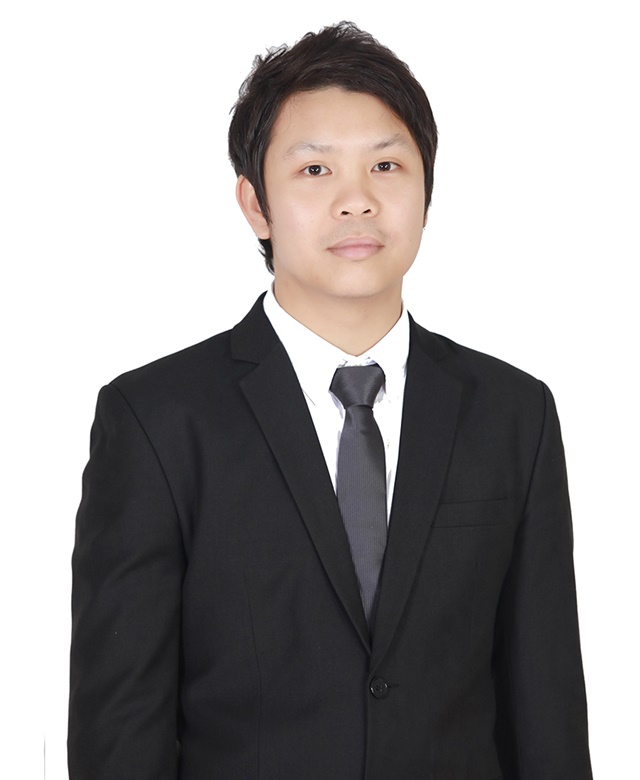BIOSORPSI LOGAM BESI (Fe) DALAM MEDIA LIMBAH CAIR ARTIFISIAL MENGGUNAKAN ADSORBEN KULIT PISANG KEPOK (Musa acuminate)
Downloads
Limbah kulit pisang Kepok telah digunakan untuk menghasilkan biosorben melalui proses yang ramah lingkungan. Limbah kulit pisang Kepok dipotong, dicuci, dikeringkan, dihaluskan dan digunakan sebagai biosorben terhadap logam besi. Penentuan konsentrasi logam besi terhadap proses adsorpsi menggunakan spektroskopi serapan atom. Adsorpsi ion besi terhadap adsorben kulit pisang Kepok menggunakan parameter waktu kontak dan pH. Waktu kontak 30 menit dan pH 6 merupakan kondisi yang sesuai untuk adsorpsi besi. Persentase adsorpsi dan kapasitas adsorpsi yang diperoleh berturut-turut sebesar 86,387% dan 1,44 mg/g. Hasil penelitian menunjukkan bahwa kulit pisang Kepok, sebagai limbah pertanian dan limbah industri rumahan, sangat berpotensi sebagai adsorben untuk menghilangkan logam beracun seperti besi dalam air.
Abdi C., Khair R.M., Saputra M.W., 2015, Pemanfaatan Limbah Kulit Pisang Kepok (Musa acuminate L.) sebagai Karbon Aktif untuk Pengolahan Air Sumur Kota Banjarbaru: Fe dan Mn, Jukung Jurnal Teknik Lingkungan, 1 (1); 8-15.
Albarelli J., Rabelo R., Santos D., Beppu M., 2011, Effects of supercritical carbon dioxide on waste banana peels for heavy metal removal, J. Supercrit. Fluids 58(3); 343-351.
Alifaturrahma P. & Hendriyanto O., 2018, Pemanfaatan Kulit Pisang Kepok Sebagai Adsorben untuk Menyisihkan Logam Cu, Jurnal Envirotek, 8 (2); ISSN: 2085-501X.
Amarasinghe B.M.W.P.K., & Williams R.A., 2007, Tea waste as a low cost adsorbent for the removal of Cu and Pb from wastewater, Chem. Eng. J. 132; 299–309.
Anwar J., Shafique U., Waheed-uz-Zaman, Salman M., Dar A., Anwar S., 2010, Removal of Pb(II) and Cd(II) from water by adsorption on peels of banana, Bioresource Technology, 101; 1752–1755.
Arninda A., Sjahrul M., Zakir M., 2014, Adsorpsi Ion Logam Pb(II) dengan Menggunakan Kulit Pisang Kepok (Musa Paradisiaca Linn), Indonesia Chimica Acta, 9 (2); 21-26.
Ashraf M.A., Maah M.J., and Yusoff I., 2010, Study of Banana Peel (Musa sapientum) as a Cationic Biosorbent, American-Eurasian J. Agric. & Environ. Sci., 8 (1); 07-17.
Bai Y., Bartkiewicz B., 2009, Removal of Cadmium from Wastewater Using Ion Exchange Resin Amberjet 1200H Columns, Polish J. of Environ. Stud. Vol. 18, No. 6; 1191-1195.
Bakalár T., Búgel M., and GajdoÅ¡ová L., 2009, Heavy metal removal using reverse osmosis, Acta Montanistica Slovaca RoÄník 14 (3); 250-253.
Cerna M., 1995, Use of Solvent Extraction for the Removal of Heavy Metals from Liquid Wastes, Enviromental Monitoring and Assesment, 34 (20); 151-162. doi:10.1007/bf00546029.
Chowdhury P., Elkamel A., & Ray, A.K., 2015, Chapter 2 Photocatalytic Processes for the Removal of Toxic Metal Ions. Heavy Metals in Water: Presence, Removal dan Safety. The Royal Society of Chemistry. ; pp. 25-43.
Darmayanti, Rahman N., Supriadi, 2012, Adsorpsi Timbal (Pb) dan Zink (Zn) dari Larutannya Menggunakan Arang Hayati (Biocharcoal) Kulit Pisang Kepok Berdasarkan Variasi pH, J. Akad. Kim., 1 (4); 159-165.
Fatmi D. & Putra B.H., 2018, Studi Efektifitas Limbah Kulit Pisang (Musa acuminate) Sebagai Biosorben Logam Berat Seng (Zn), MENARA Ilmu, XII (9); 40-50.
Fauici M., 2017, Adsorpsi Ion Pb (II) dan Cr (VI) Menggunakan Arang Kulit Pisang Kepok (Musa Paradisiaca Linn) pada Limbah Cair Industri (Studi Kasus PT. Sermani Steel), Tesis, Universitas Hasanuddin, Makassar.
Jha M.K, Kumar V., Maharaj L., and Singh R., 2004, Studies on Leaching and Recycling of Zinc from Rayon Waste Sludge, J. Ind. Eng. Chem., Res. 43; 1284-1285.
Mohapatra D., Mishra S., Sutar N., 2010, Banana and its by-product utilisation: An overview, AN Overv. J.Sci. Ind. Res. 69; 323–329.
Pranoto P., Martini T., Maharditya W., 2020, Uji Efektivitas dan Karakterisasi Komposit Tanah Andisol/Arang Tempurung Kelapa Untuk Adsorpsi Logam Berat Besi (Fe), ALCHEMY Jurnal Penelitian Kimia, 16(1); 50-66.
Purnama P.E., Dewi I.G.A.K.S.P., dan Ratnayani K., 2015, Kapasitas Adsorpsi Beberapa Jenis Kulit Pisang Teraktivasi NaOH Sebagai Adsorben Logam Timbal (Pb), Jurnal Kimia, 9 (2); 196-202.
Safrianti I., Wahyuni N., and Zaharah T., 2012, Adsorpsi Timbal (II) Oleh Selulosa Limbah Jerami Padi Teraktivasi Asam Nitrat, Pengaruh pH dan Waktu Kontak, Jurnal Kimia Khatulistiwa, 1(1); 1-7.
Salim R.M., Chowdhury A.J.K., Rayathulhan R., Yunus K., Sarkar Md.Z.I., 2015, Biosorption of Pb and Cu from aqueous solution using banana peel powder, Desalination and Water Treatment, 57 (1); 303-314.
Sirilert M. & Maikrang K., 2018, Adsorpstion Isotherm of Some Heavy Metal in Water on Unripe dan Ripe Peel of Banana, Naresuan University Journal: Science and Technology, 26 (1); 128-141.
Stoller M., Azizova G., Mammadova A., Vilardi G., Di Palma L., Chianese A., 2016, Treatment of olive oil processing wastewater by ultrafiltration, nanofiltration, reverse osmosis and biofiltration, Chem. Eng. Trans., 47; 409–414.
Tang X., Zheng H., Teng H., Sun Y., Guo J., Xie W., Yang Q. & Chen W., 2014, Chemical coagulation process for the removal of heavy metals from water: a review, Desalination and Water Treatment, 57 (4); 1733-1748.
Vilardi G., Di Palma L., Verdone N., 2017, Heavy metals adsorption by banana peels micro-powder. Equilibrium modeling by non-linear models, Chinese Journal of Chemical Engineering, 26 (3); 455-464. doi:10.1016/j.cjche.2017.06.026.
Vörösmarty C.J., Green P., Salisbury J., Lammers R.B., 2000, Global water resources: Vulnerability from climate change and population growth, Science, 289; 284–288.
Wardani G.A. & Wulandari W.T., 2018, Pemanfaatan Limbah Kulit Pisang Kepok (Musa acuminate) sebagai Biosorben Ion Timbal (II), Jurnal Kimia VALENSI: Jurnal Penelitian dan Pengembangan Ilmu Kimia, 4 (2); 143-148.
Yetri Y. & Hidayati R., 2018, Kemampuan Kulit Buah Kakao (Theobromacacao) Sebagai Biosorben Ion Logam Hg(II) dan Ni(II), Seminar Nasional Industri dan Teknologi (SNIT), Politeknik Negeri Bengkalis.
COPYRIGHT NOTICE
1. By submitting the article to Jurnal Kimia Riset (JKR), the author has agreed to transfer some of the copyrights to the publisher of the research chemistry journal, Universitas Airlangga, indicated in the Copyright Transfer Agreement.
2. Authors still retain significant rights to use and share their own published articles for non-commercial purposes subject to Creative Commons Attribution-NonComercial 4.0 International License
3. All publications (printed/electronic) are open access for educational purposes, research, library, and other non-commercial purposes. Besides the purposes mentioned above, the editorial board is not responsible for copyright violations.















